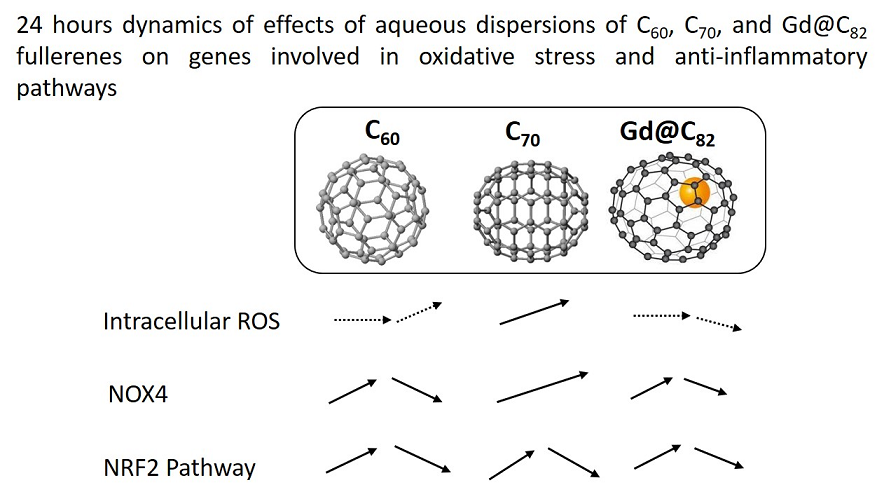Preprint
Article
Effects of Aqueous Dispersions of C60, C70 and Gd@C82 Fullerenes on Genes Involved in Oxidative Stress and Anti-inflammatory Pathways
Altmetrics
Downloads
273
Views
279
Comments
0
A peer-reviewed article of this preprint also exists.
Submitted:
03 May 2021
Posted:
07 May 2021
You are already at the latest version
Alerts
Abstract
Background: Fullerenes and metallofullerenes can be considered promising nanopharmaceuticals themselves and as a basis for chemical modification. As reactive oxygen species homeostasis plays a vital role in cells, the study of their effect on genes involved in oxidative stress and anti-inflammatory response is of particular importance. Methods: Human fetal lung fibroblasts were incubated with aqueous dispersions of C60, C70, and Gd@C82 in concentrations of 5 nM and 1.5 µM for 1, 3, 24, and 72 hours. Cell viability, intracellular ROS, NOX4, NFκB, PRAR-γ, NRF2, heme oxygenase 1, and NAD(P)H quinone dehydrogenase 1 expression have been studied. Results & conclusion: The aqueous dispersions of C60, C70, and Gd@C82 fullerenes are active participants in ROS homeostasis. Low and high concentrations of AFDs have similar effects. C70 was the most inert substance, C60 was the most active substance. All AFDs have both a “prooxidant” and “antioxidant” effect, but with a different balance. Gd@C82 was a substance with more pronounced antioxidant and anti-inflammatory properties, while C70 had more pronounced “prooxidant” properties.

Keywords:
Subject: Biology and Life Sciences - Biochemistry and Molecular Biology
Copyright: This open access article is published under a Creative Commons CC BY 4.0 license, which permit the free download, distribution, and reuse, provided that the author and preprint are cited in any reuse.
Effects of Aqueous Dispersions of C60, C70 and Gd@C82 Fullerenes on Genes Involved in Oxidative Stress and Anti-inflammatory Pathways
Elena V. Proskurnina
et al.
,
2021
MDPI Initiatives
Important Links
© 2024 MDPI (Basel, Switzerland) unless otherwise stated







